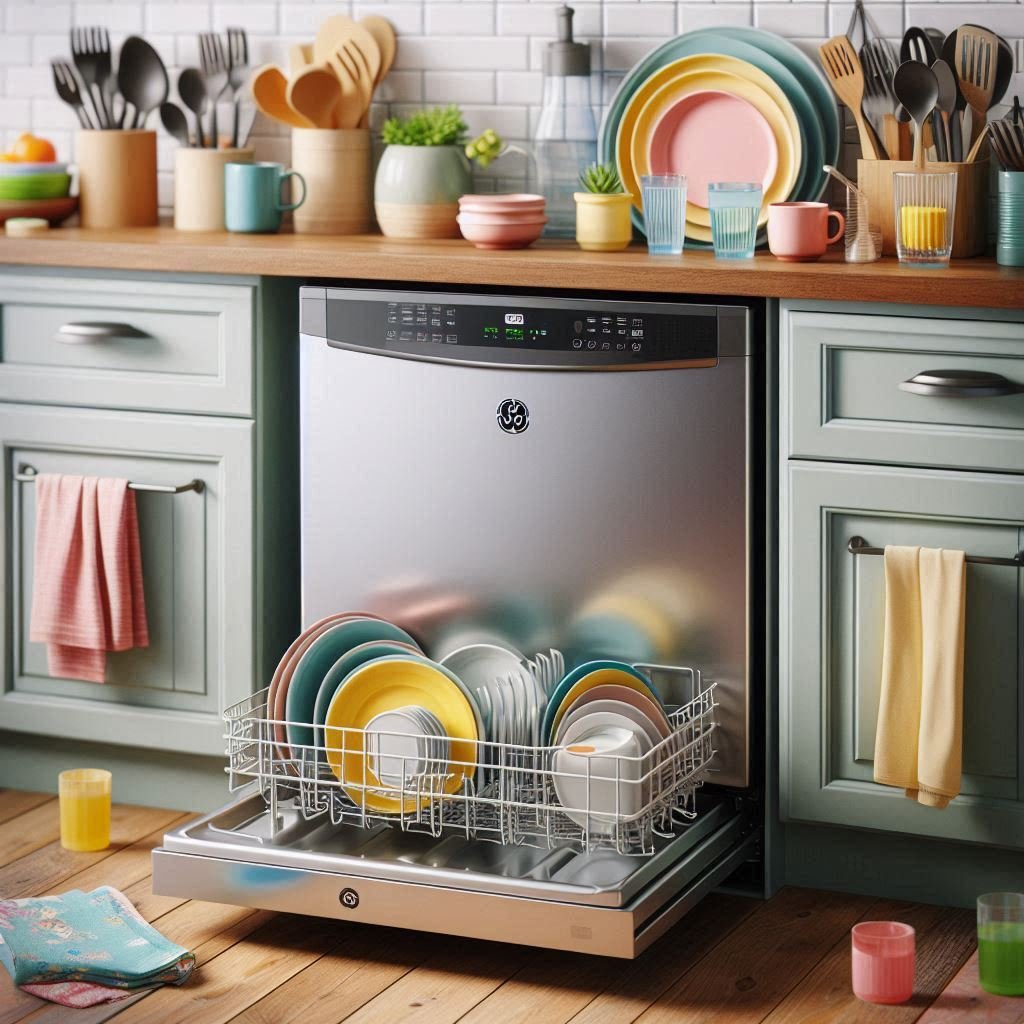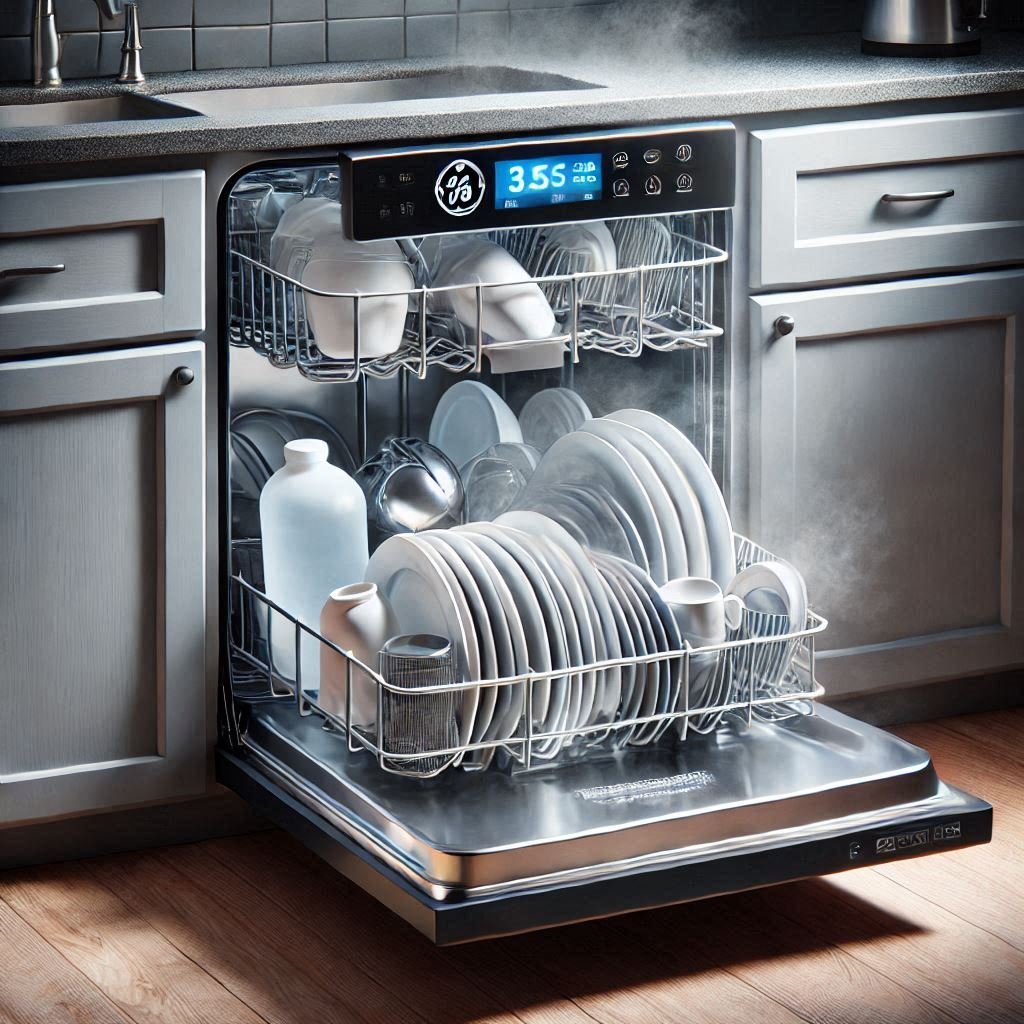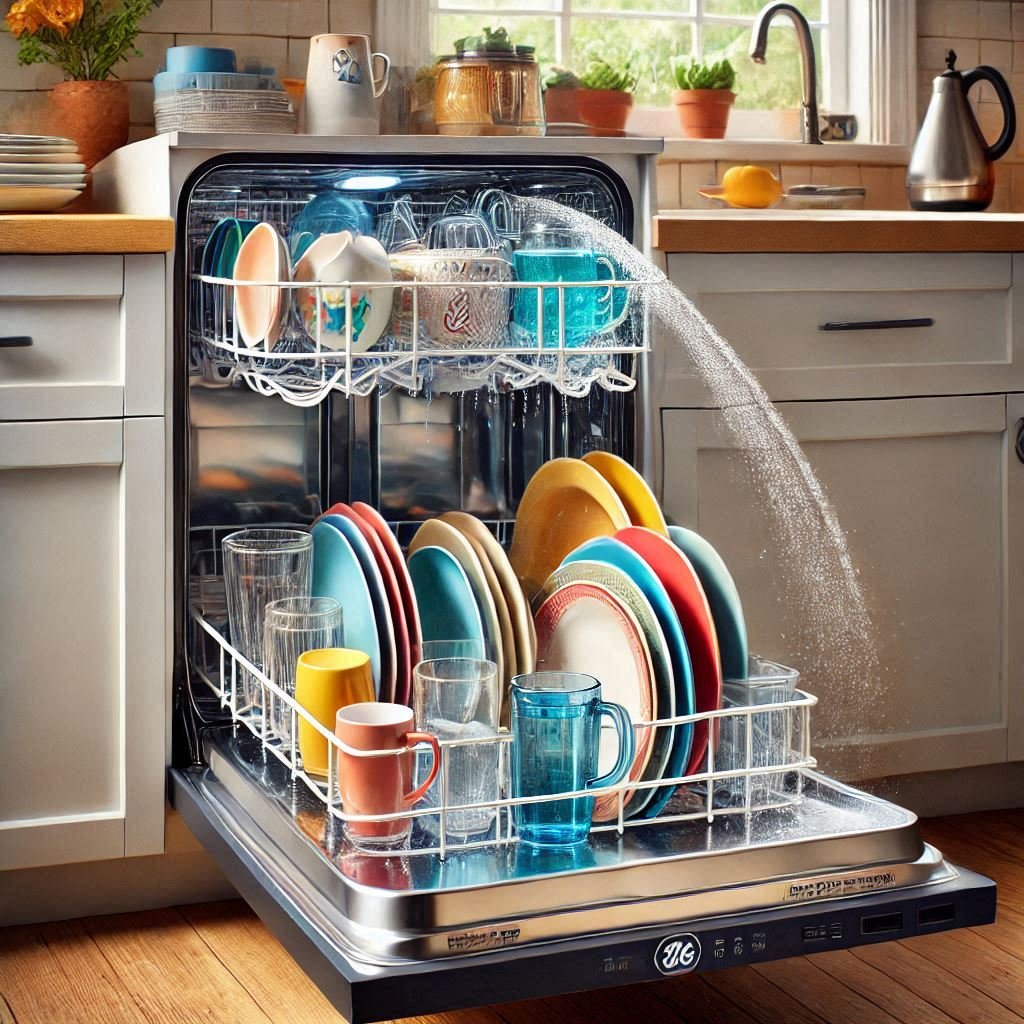Having your GE dishwasher drain pump clogged can be quite a hassle. Trust me, I’ve been there. You load up your dishwasher, hit start, and leave it to do its job, only to come back and find a puddle of water at the bottom. This issue can turn your kitchen into a mini disaster zone if not addressed quickly.
But don’t worry, I’m here to guide you through the steps to get your dishwasher back in working order. In this article, I’ll walk you through the signs of a clogged drain pump, how to fix it, and preventive measures to avoid future clogs. Let’s dive in!

Table of Contents
Signs of a Clogged GE Dishwasher Drain Pump
Before jumping into the fix, it’s essential to recognize the signs of a clogged drain pump. Here’s what you need to look out for:
- Water remains at the bottom of the dishwasher after a cycle.
- The dishwasher makes unusual noises during the drain cycle.
- Dishes come out dirty or not fully rinsed.
- The dishwasher stops mid-cycle or doesn’t complete the cycle.
Identifying these symptoms early can save you a lot of trouble and prevent potential damage to your appliance.
Tools and Materials You’ll Need
To fix your GE dishwasher drain pump clogged issue, you’ll need a few basic tools and materials. Gather the following before you start:
- Screwdriver (Phillips and flathead)
- Pliers
- Towels or rags
- Bucket or shallow pan
- Dish soap
- Cleaning brush
Having these tools at hand will make the process smoother and quicker.
GE Dishwasher Clogged Drain Pump Fixing Guide
- Disconnect the Power and Water Supply: Safety first! Make sure to unplug your dishwasher from the power source and turn off the water supply. This step is crucial to avoid any electrical hazards or water spills.
- Remove the Bottom Rack and Access the Drain Area: Open your dishwasher and take out the bottom rack. This will give you clear access to the drain area. You might need to remove the spray arm as well, depending on your dishwasher model.
- Locate and Remove the Filter: The filter is usually located at the bottom of the dishwasher. Unscrew and remove it. Clean the filter thoroughly with dish soap and a brush. This step is essential as a clogged filter can cause the drain pump to clog too.
- Inspect the Drain Pump: With the filter removed, you can now access the drain pump. Look for any debris or food particles clogging the pump. Use a flashlight to get a clear view. If you see any blockages, carefully remove them using pliers or a brush.
- Check the Drain Hose: The drain hose is another common culprit for clogs. Detach the hose from the pump and check for any blockages. Run water through the hose to ensure it’s clear. If you find any clogs, use a long brush to clean the hose thoroughly.
- Reassemble the Dishwasher: Once you’ve cleared all the blockages, it’s time to reassemble the dishwasher. Put the filter and spray arm back in place, and reattach the bottom rack. Make sure everything is securely in place before you proceed.
- Test the Dishwasher: Reconnect the power and water supply, and run a test cycle to ensure everything is working correctly. Keep an eye on the dishwasher during this cycle to check for any leaks or unusual noises.
Preventive Measures to Avoid Future Drain Pump Clogs
To avoid dealing with a GE dishwasher drain pump clogged again, follow these preventive tips:
- Regularly clean the filter: Make it a habit to clean the filter at least once a month.
- Scrape off food particles: Before loading dishes, scrape off large food particles to prevent them from clogging the drain.
- Run hot water: Occasionally run a hot water cycle with a dishwasher cleaner to remove any buildup.
- Check the drain hose: Inspect the drain hose periodically for any signs of wear or clogs.
Implementing these tips will help keep your dishwasher running smoothly and prevent future clogs.
FAQs
How often should I clean my dishwasher filter?
It’s recommended to clean your dishwasher filter at least once a month to prevent any blockages.
What should I do if my dishwasher still doesn’t drain after cleaning the pump?
If the problem persists, it might be a more serious issue. Consider calling a professional technician to inspect your dishwasher.
Can I use vinegar to clean my dishwasher?
Yes, running a cycle with vinegar can help remove buildup and keep your dishwasher clean. Just place a cup of vinegar on the top rack and run a hot water cycle.
Why does my dishwasher make a grinding noise?
A grinding noise could indicate that there’s debris in the drain pump or the motor is faulty. Check and clean the pump, and if the noise continues, consider seeking professional help.
How long do GE dishwasher pumps last?
On average, GE dishwasher pumps can last between 7 to 10 years, depending on usage and maintenance.
Bottom Line
Experiencing a GE dishwasher drain pump clogged is undoubtedly inconvenient, but with the right approach, you can fix it yourself without much hassle. Regular maintenance and being mindful of what goes into your dishwasher can go a long way in preventing future issues. Now that you know how to tackle this problem, you can keep your dishwasher in top shape and enjoy spotless dishes every time. Happy dishwashing!




Leave a Reply